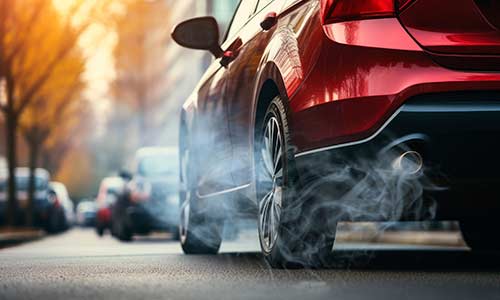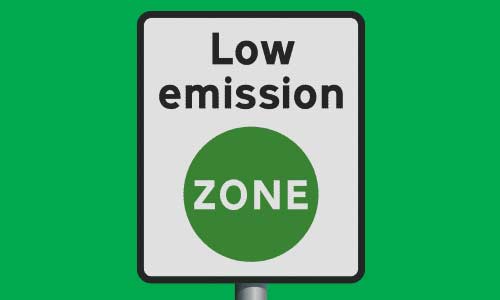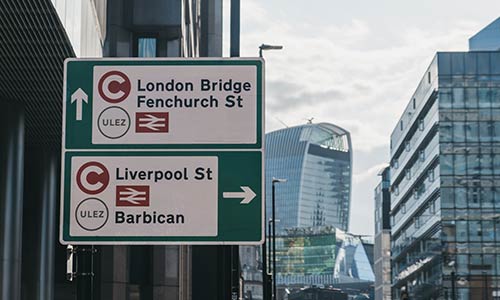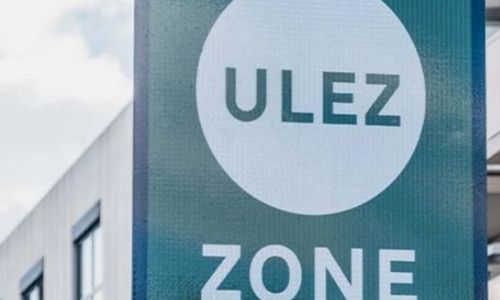
Clean Air Zones: Complete Guide to CAZ
Last updated November 11th, 2023
Numerous local authorities have introduced Clean Air Zones (CAZs) in highly polluted areas in a drive to improve air quality and protect public health.
Much like London’s ULEZ (Ultra Low Emission Zone), which was introduced in 2019, CAZs levy daily charges on high-polluting vehicles travelling within their designated areas.
The very first CAZ was introduced in Bath in March 2021. Since then, cities such as Bradford, Bristol and Sheffield have followed suit.
In this guide, we will define a Clean Air Zone. We’ll also clarify where they operate and explain the emissions-based requirements that apply within the designated zones.
Finally, we’ll explain the charges that apply within each CAZ (and other related chargeable zones) - and which vehicles are liable to pay them.
Value your car in under 30 seconds
What is a CAZ?
A Clean Air Zone is a designated area (usually within a town or city) where daily charges are applied to high-polluting vehicles travelling within them.
These measures are implemented to deter the owners of vehicles that fail to meet certain minimum emissions requirements from travelling within the CAZ, which helps to reduce emissions and improve local air quality.
Whilst individual CAZ fees (and which vehicles can be charged) vary from city to city, the standards they must meet remain the same across all zones:
- Euro 4: For petrol vehicles (including hybrids and mild hybrids incorporating petrol powertrains).
- Euro 6: For all diesel vehicles (including hybrids and mild hybrids incorporating diesel powertrains).
Fully electric vehicles are exempt from all CAZ charges.
There are four classes of Clean Air Zone (A-D), with each class charging different vehicles if they fail to meet the above criteria. Classes A-C target various commercial and private hire vehicles, whereas class D also includes private cars (and in some cases, motorcycles).
Where are the Clean Air Zones in the UK?
CAZs currently operate within the following UK areas:
- Bath
- Birmingham
- Bradford
- Bristol
- Tyneside (Newcastle and Gateshead).
- Portsmouth.
- Sheffield.
- Southampton.
- York (applies to local buses only).
The city of Oxford runs a chargeable zone targeting all non-fully electric vehicles, known as the Oxford Zero Emission Zone (ZEZ).
Some cities, including London, Brighton, Norwich and Oxford also operate Low Emission Zones (LEZs), which target high-polluting heavy diesel vehicles.
Are more cities going to have Clean Air Zones?
As local authorities continually explore new ways to improve air quality, increasing numbers are considering implementing their own Clean Air Zones.
Councils across Greater Manchester have been debating whether to introduce a Manchester CAZ for several years. (The majority of council members are currently opposed to this idea. However, there is still a possibility this will change in the future.)
Elsewhere, Caerphilly is expected to introduce its own Clean Air Zone in the near future (with the aim of restricting and reducing the use of HGVs within the town centre).
St Albans, Warrington, and Wokingham all currently have a CAZ or ULEZ under consideration.
Which cities use alternate emissions strategies?
Clean Air Zones have helped to curb emission levels in many UK cities. However, they are not viable solutions for some areas. Many towns and cities have adopted alternative measures to improve local air quality:
- Basildon has lowered speed limits in certain areas, introduced cycling routes and installed EV charging stations.
- Cambridge has introduced a daily charge for all cars driving within the city centre during the daytime as part of the ‘Cambridge Sustainable Travel Zone’ plans.
- Derby has increased traffic management measures within the city centre (and on the routes leading in and out of it).
- Nottingham has used funding to retrofit buses and other public vehicles to reduce their emissions.
- Liverpool has rolled out the ‘Let’s Clear the Air Liverpool’ scheme, which encourages all citizens to take steps to reduce their carbon footprint.
Which vehicles are affected by CAZ charges?
The types of vehicles that may be subject to charges depends on the class of Clean Air Zone in question.
Here is a quick explainer on the various Clean Air Zone classes and the vehicles affected:
CAZ Class |
Vehicle types |
|---|---|
| A |
Buses, coaches, taxis and private hire vehicles. |
| B |
Buses, coaches, taxis, private hire vehicles and heavy goods vehicles (HGVs). |
| C |
Buses, coaches, taxis, private hire vehicles, HGVs, vans and minibuses. |
| D |
Buses, coaches, taxis, private hire vehicles, HGVs, vans, minibuses and cars. (Local authorities also have the option to include motorcycles.) |
CAZ exemptions
Certain vehicles are exempt from CAZ charges including:
- Vehicles with a disabled tax class or disabled passenger tax class.
- Some agricultural vehicles.
- Registered historic vehicles (i.e. those registered for classic car tax exemption).
- Military vehicles.
- Ultra-low emission vehicles.
- Vehicles retrofitted under the Clean Vehicle Retrofit Accreditation Scheme (CVRAS).
Some authorities have implemented further exemptions at a local level. For example, certain commercial vehicles registered to businesses within Newcastle and Sheffield’s Clean Air Zones are exempt from local CAZ charges.
If you regularly travel through a Clean Air Zone in a non-compliant car, it may be worth selling your car - and making the switch to a greener model.
How much are CAZ charges?
Clean Air Zone charges and penalties vary between locations:
| Location |
CAZ Class |
Daily and Penalty Charges |
|---|---|---|
| Aberdeen |
Scottish LEZ (similar to CAZ) Class D |
£60 penalty charge notice (PCN). Enforced from 1st June 2024. |
| Bath |
Class C |
£9 for small vehicles. £100 for large vehicles. |
| Birmingham |
Class D |
£8 for small vehicles. £50 for large vehicles. |
| Bristol |
Class D |
£9 for small vehicles. £100 for large vehicles. |
| Bradford |
Class C |
£7 for taxis. £9 for small vehicles. £50 for large vehicles. |
| Dundee |
Scottish LEZ (similar to CAZ) Class D |
£60 PCN. Enforced from 1st June 2024. |
| Edinburgh |
Scottish LEZ (similar to CAZ) Class D |
£60 PCN. Enforced from 1st June 2024. |
| Glasgow |
Scottish LEZ (similar to CAZ) Class D |
£60 PCN. |
| London |
Class D LEZ (similar to CAZ) |
£12.50 for small vehicles. £100-£300 daily LEZ charge for large vehicles. |
| Oxford |
Class D Zero-emission zone (ZEZ) (similar to CAZ) |
No charge for fully-electric vehicles. £2 for ultra-low emission vehicles. £4 for low emission vehicles. £10 for non-compliant vehicles. |
| Newcastle and Gateshead |
Class C |
£12.50 for small vehicles. £50 for large vehicles. |
| Portsmouth |
Class B |
£10 for taxis. £50 for large vehicles. |
| Sheffield |
Class C |
£10 for small vehicles. £50 for large vehicles. |
| Southampton |
Class B |
Non-charging |
| York |
Class A |
Non-charging (Applies to local bus services only.) |
Please note: For current and definitive information about a specific CAZ, please refer to the gov.uk Clean Air Zone page or the relevant local authority’s website.





